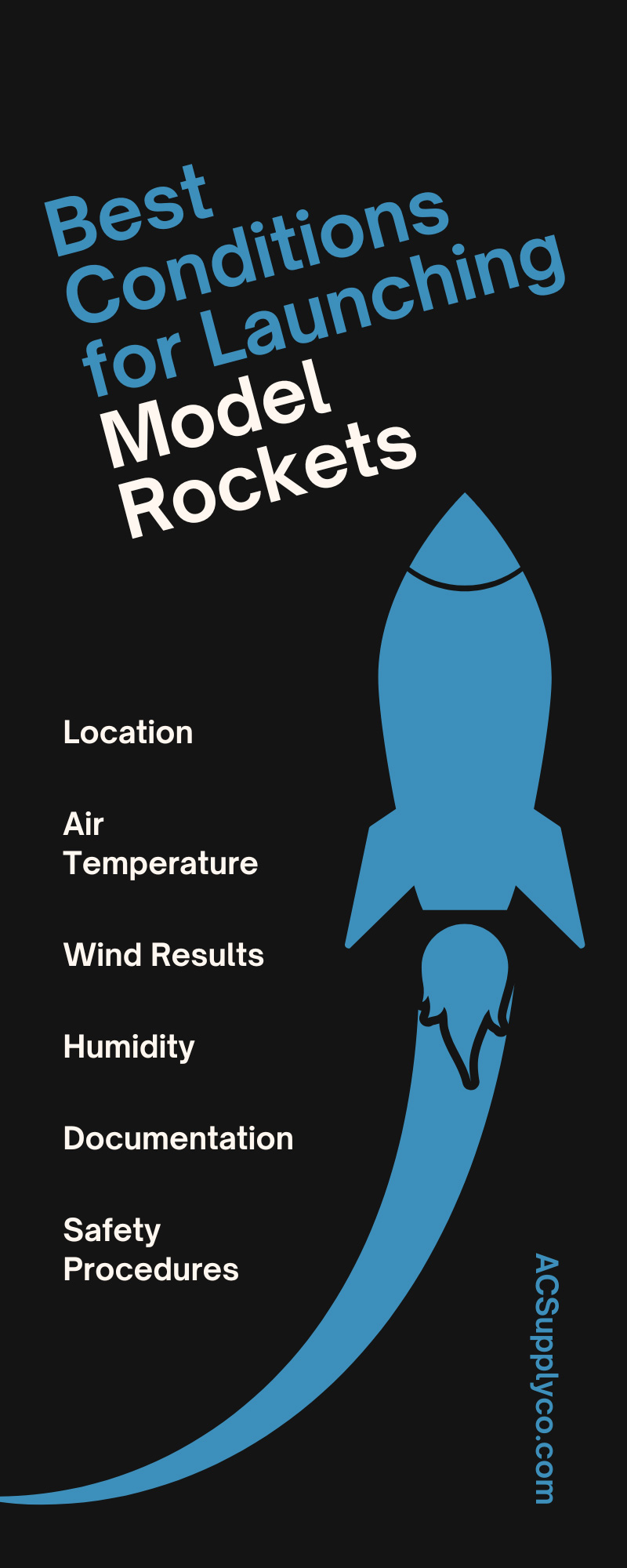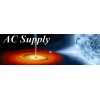Location
For several reasons, the location of the launch matters. Most model rocket launches take place in an open field for the safety of those involved. You would never launch a rocket in a location with heavy foot and motor traffic. Doing so could put bystanders in danger.
That’s why an open field or vacant lot is the best option. The fewer trees, the better because you never want to attempt to retrieve your rocket from great heights. Having it land on the ground is the best option. Fields can be uneven, but try to find the area with the flattest surface. The even ground makes for better results.
The rocket launches from the pad, but you don’t want to deal with issues trying to get the pad to stay straight. If it tilts even the slightest bit, the rocket could launch in a different direction than intended. Get the model as stationary as possible before proceeding with the launch. We’ve got model rocket kits with launch pads here at AC Supply that prove stable.
Air Temperature
Perfect weather is crucial for a successful launch. For example, you would never launch your rocket during heavy rain for obvious reasons. Air temperature is the first weather variable launchers need to consider. Launching a rocket on a cool day produces different results than launching it on an extremely hot one.
When air is hot, the air molecules move farther apart from each other, making the air less dense. Less dense air means less resistance, so you can expect the model rocket to travel farther on a hot day than on a cool day.
You’ll rarely see a rocket launch happening during the winter. It’s not completely unheard of, but the results wouldn’t be as good. Keep a close eye on the weather leading up to your rocket launch to choose the perfect day.
Wind Results
After the air temperature, launchers need to account for the wind. Wind can significantly affect the launch. Depending on the conditions that day, the rocket could be fighting against the wind. Strong winds have the power to change the direction and trajectory of the rocket.
Launchers need to account for the wind velocity at ground level and above. The velocity will look different at 5,000 or 20,000 feet above the ground. You’ll have to run a series of launches to account for the possible changes.
Wind travels in various directions, but for the sake of your launch, consider the wind as a horizontal vector perpendicular to the vertical flight. With this situation, you’ll need to calculate and make changes to your model to adjust for the disruption. On a perfect day, you won’t have any wind restrictions, but the weather can quickly change. Make sure to prepare for the wind.
Humidity
Say the launch day is perfect. The air temperature is 90 degrees with little to no wind. All these aspects point toward a successful launch. However, the launcher still needs to account for humidity. Humidity is closely tied to air temperature. So when checking the temperature for that day, pay close attention to the humidity too.
People often think humid air is denser than dry air because of the effects it has on their person. However, dry air is denser than humid air. Earth’s atmosphere mainly consists of nitrogen and oxygen. You measure these two molecules with unified atomic mass units (u). On a particularly humid day, the oxygen might weigh 32u and nitrogen 28u.
For your calculations, you’ll compare these units to the density of air and discover that damp air is less dense than dry air. It ties in closely with the separation of molecules in high heat, as explained earlier. Both high heat and humid air will result in a farther distance for the model rocket launch.
Documentation
The best way to account for all this potential change and resistance is adequate documentation. Before the official launch, you’ll have a series of practice ones. If possible, record each practice launch. You’ll need to attach a camera to the launch and have the corresponding results showcased on a separate device.
The camera will measure the velocity of the rocket, and after the landing, you can compare the documented results. Because launchers can’t travel with the rocket, this is the best way to gather information. Have a launch on days with different temperatures and adjustments made to the launch.
After comparing the results, you can form a better prediction for the official launch day. Place the camera in a secure location, and make sure you launch in an area with little interference. You don’t want to retrieve the camera and find issues or destruction.
Safety Procedures
Safety needs to remain at the forefront of your mind when it comes to rocket launches. We’ve mentioned that an open field is the best launch location. But the launcher also needs to stay safe when retrieving the rocket after a launch.
If the model rocket lands in a tree or on power lines, do not attempt to retrieve it. Though you need to retrieve your rocket to get your results, you should never put yourself in danger. If you choose an open field, make sure the launch does not happen on dry grass. Dry grass is highly combustible during a rocket launch.
Damp grass or a vacant lot is best. Launching on a particularly humid day can also help dampen the grass. Launch on a day with few to no clouds in the sky. You need clear skies for the safety of animals and possible aircraft nearby.
We want participants to enjoy all our kits and science projects and attempt them under the best conditions with dependable supplies and equipment. Now that you know the best conditions for launching model rockets, go forth and conquer. For more information or to view our products, visit our website.



